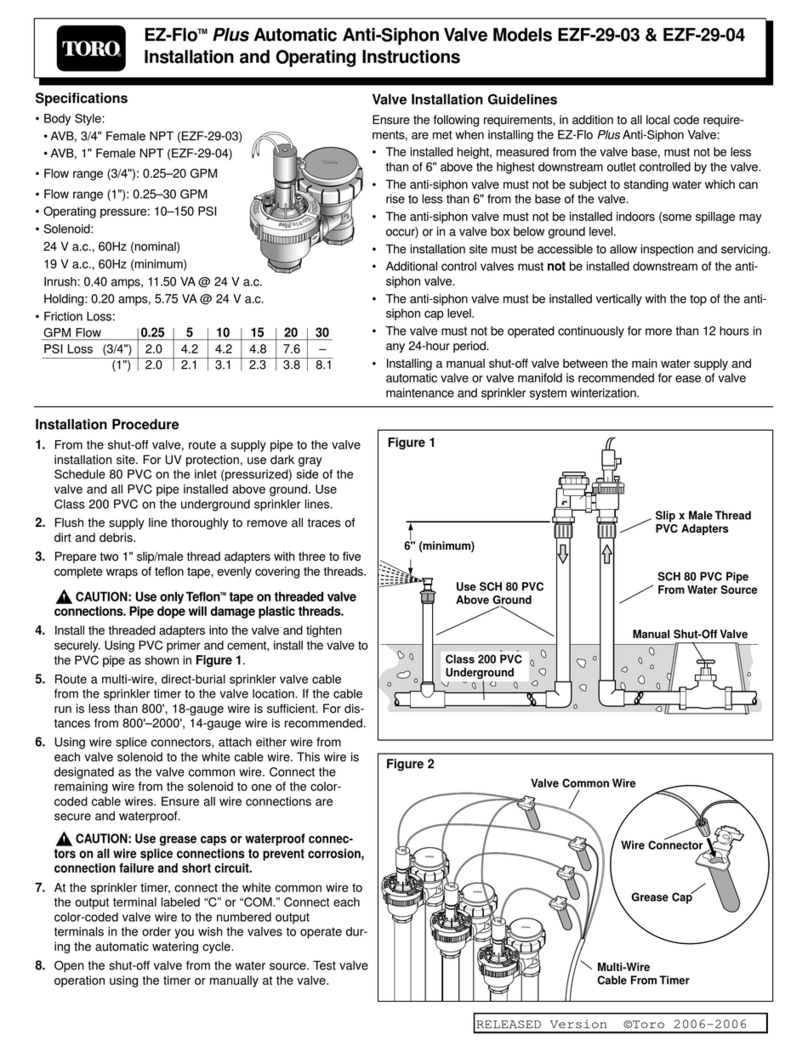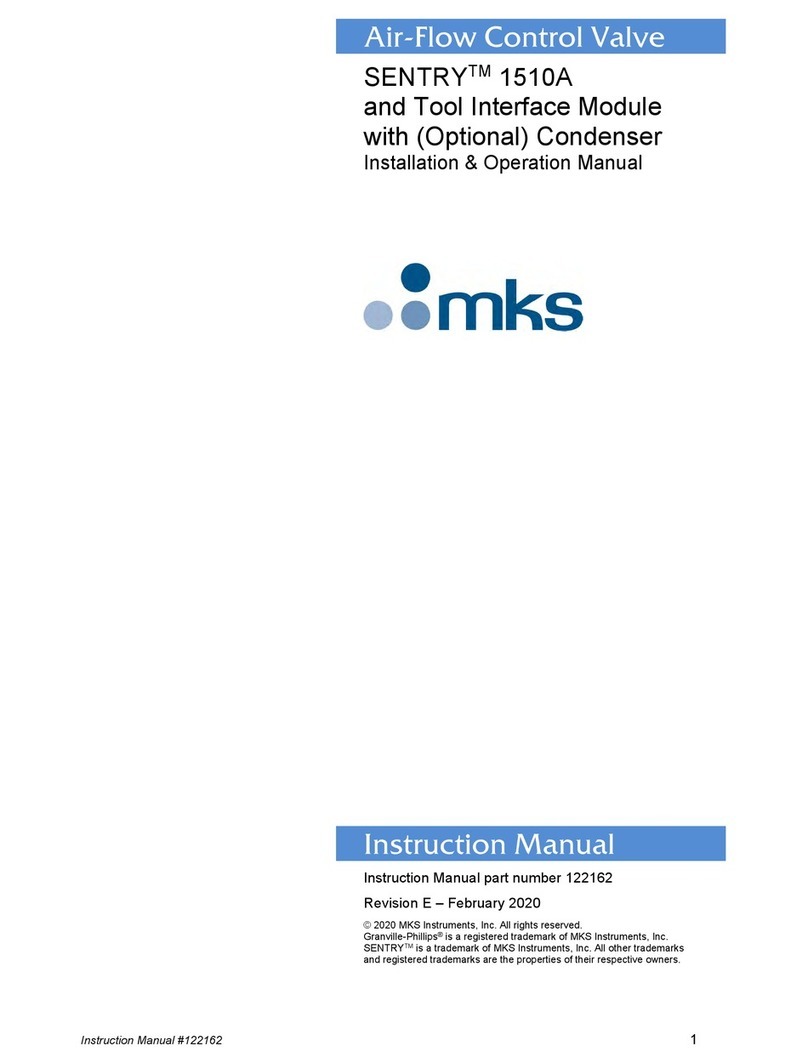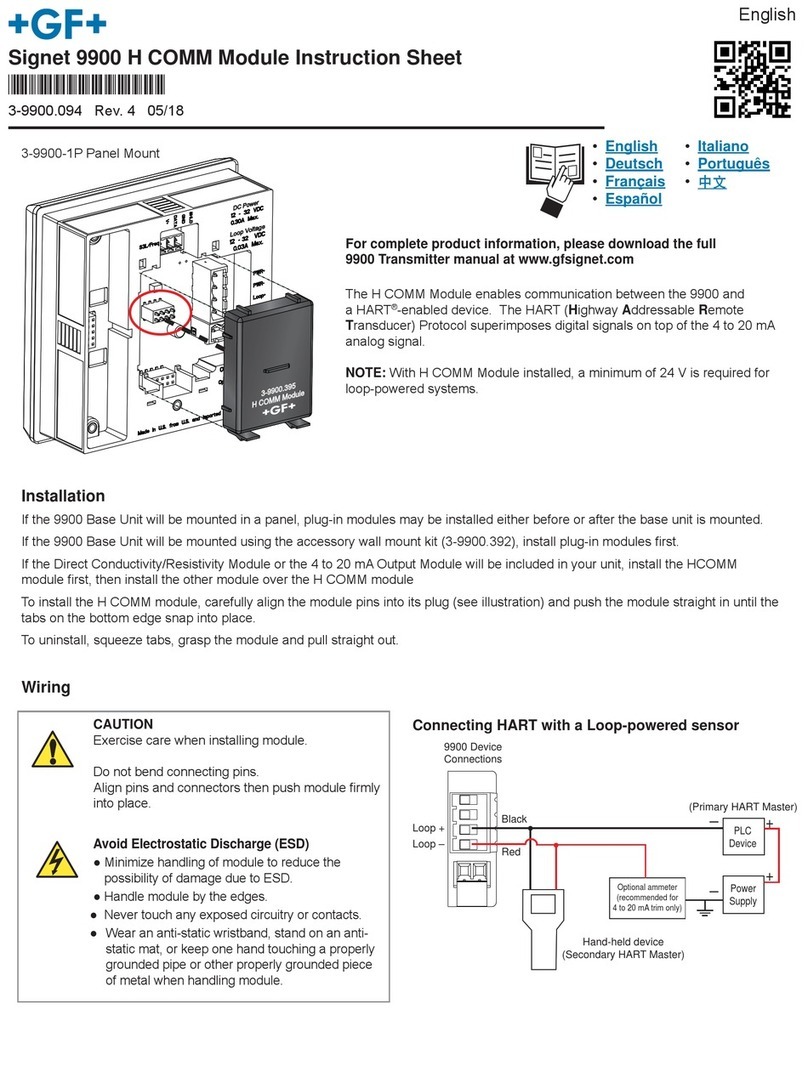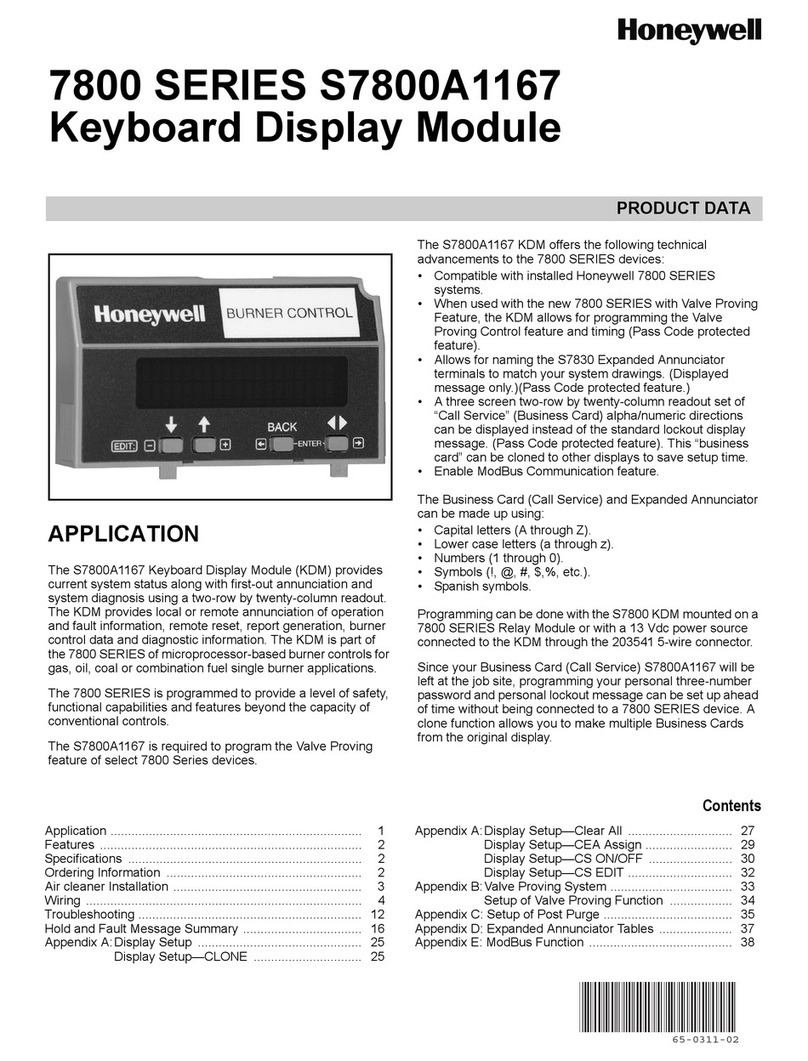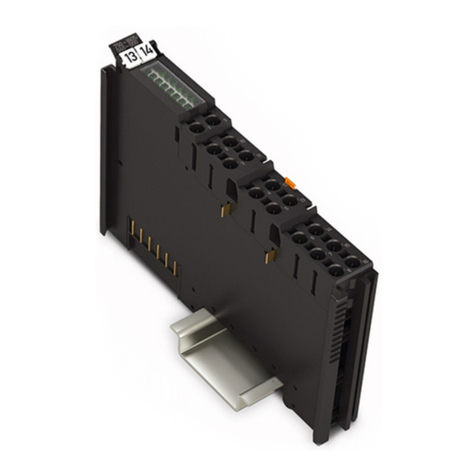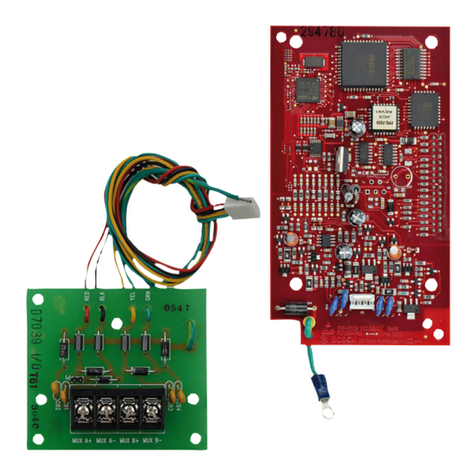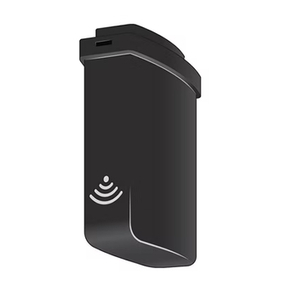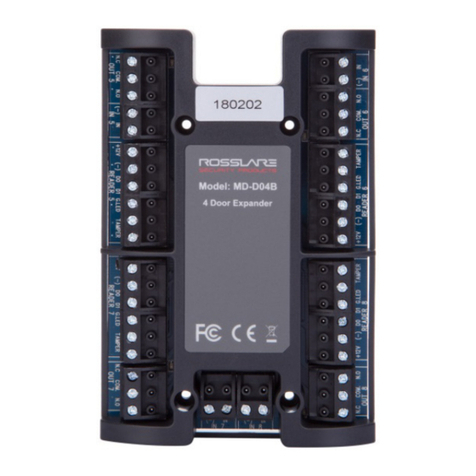Emcotec RC Electronic DPSI LCD User manual


DPSI LCD Operating Instructions Version 1.0
Page 2 of 32
Contents
1. Preface .............................................................................................3
2. Characteristics ................................................................................ 4
3. Display- and Control-Elements......................................................6
4. Dimensions......................................................................................7
5. Assembly ......................................................................................... 8
6. Push-Buttons and LED-Indicators................................................. 9
6.1. Functions of Buttons................................................................9
6.2. Functions of LEDs .................................................................10
7. Readouts of the LC-Display ......................................................... 13
7.1. Readout after Power-On........................................................14
7.2. Readout of Receiver Information...........................................15
7.3. Readout of Receiver Errors ...................................................18
7.4. Readout of the Current Supply ..............................................19
7.5. Readout of Current Supply Errors .........................................21
8. Resetting Stored Values...............................................................22
9. Programming / Setup.................................................................... 23
9.1. Programming Options............................................................24
9.2. Operating Mode.....................................................................25
9.3. Switching Positions Failsafe..................................................26
9.4. Switching Positions Master/Slave..........................................27
9.5. Units.......................................................................................28
9.6. Battery Type ..........................................................................28
9.7. Buzzer On/Off........................................................................29
9.8. Language...............................................................................29
9.9. Factory Settings.....................................................................30
9.10. Exit / Return.........................................................................30
10. Technical Data of DPSI LCD.......................................................30
11. Warranty.......................................................................................31

DPSI LCD Operating Instructions Version 1.0
Page 3 of 32
1. Preface
With the DPSI LCD you purchased a high grade, modern and secure
product. We appreciate your trust!
Long lasting experience for years in development and manufacturing of
electronically systems as well as the knowledge of the world’s best
model airplane pilots has influenced the development. All products are
developed by experienced engineers and manufactured at EMCOTEC
GmbH in Germany on our own production line. Extensive optically and
electronically end tests for every system, which leaves our house,
assure that you, our customer acquire an absolute reliable product,
which considerably increases the reliability of your valuable RC-Model.
Of course, the DPSI LCD (just like all products from EMCOTEC) not
only has been tested extensively in the laboratory, but also went
through intensive flight-testing. Like done in the automobile industry an
FMEA (Failure Mode and Effect Analysis) reduces the possibility of
damage and malfunction on operating errors to a minimum.
Hint:
We kindly ask you to read these operating instructions carefully and observe the
installation hints. Thus, errors can be avoided in advance.
We are all ears for your wishes and questions. Challenge us!
Bobingen, January 2008
The Staff of EMCOTEC GmbH

DPSI LCD Operating Instructions Version 1.0
Page 4 of 32
2. Characteristics
The DPSI LCD serves as an optional extension to DPSI products,
which can control a LC-Display:
•DPSI receiver switch (e.g. TWIN Mini stand alone)
•DPSI dual current supply (e.g. entire TWIN Mini)
•Additional future products
It displays (dependent on DPSI base system) important information in
plain text which is gathered during operation. These is information
about
•Signal quality of the receiver
•Supply voltage of receiver (batteries)
•Withdrawn capacities from batteries
•Current flow in receiver equipment
and much more.
Due to the integrated LEDs system states can be realized immediately
without first reading the text in the display. Critical situations are
indicated by quickly blinking LEDs. Root cause can than be read from
the display.
Three push buttons serve as display selectors or serve for setting up
options. It was never easier to display different data or set up diverse
options. The optimized handling concept was evaluated in practical
studies and is therefore nearly self explaining.
The DPSI LCD can also serve as On/Off switch for certain products of
the EMCOTEC DPSI program, thereby eliminating the need for the
regular switch actuator.
The DPSI LCD is mounted into the model just like a cockpit instrument.
In this way, a functional handling and display unit results, upgrading
the overall picture of the model by these small dimensions and a
shapely housing.

DPSI LCD Operating Instructions Version 1.0
Page 5 of 32
There is a 6-pin connector in the center of the back side of the DPSI
LCD for a connection cable. The connection cable (4-pin or 6-pin
depending on DPSI base system) is simply connected to the 6-pin
connector. Reverse polarity is impossible.
The other side of the cable is connected to the corresponding DPSI
system (e.g. DPSI TWIN Mini). Here, polarity must be observed. The
red wire is “positive” and must be “congruent” with the corresponding
markings (+) at the base system (see picture).

DPSI LCD Operating Instructions Version 1.0
Page 6 of 32
3. Display- and Control-Elements

DPSI LCD Operating Instructions Version 1.0
Page 7 of 32
4. Dimensions

DPSI LCD Operating Instructions Version 1.0
Page 8 of 32
5. Assembly
The DPSI LCD can be used as a cockpit instrument. Cut a squared
hole of 57mm edge length and 6mm inner radii into the cockpit (or
similar mounting plate). The DPSI LCD is then to be fed through the
hole from back to front (!) and secured using 4 regular M3 screws. The
screws are self cutting and find sufficient material in the plastic of the
mounting latches. Screw distance is 60mm.
Drilling template 1:1 scale:

DPSI LCD Operating Instructions Version 1.0
Page 9 of 32
6. Push-Buttons and LED-Indicators
6.1. Functions of Buttons
Depending on the used or connected DPSI system, the three push
buttons of the DPSI LCD can be used as On/Off switch (e.g. for the
DPSI TWIN Mini including adapted dual power supply).
Turning on is accomplished by pushing the “SET”-button. Turning off is
done by pushing the “DOWN” () and “UP” () buttons simultaneously
(!) for about 2 seconds.
When turned on, the buttons work for conforming entries (“SET”) or for
selections of information from the display “DOWN” () and “UP” ().
By pushing the “UP”- or “DOWN”-buttons multiple times, the menu
(one frame with text) advances.
There are some particular features in the layout of the buttons:
1.) If the “SET”-button is permanently pushed for about 5 seconds
during turning the power on, the system changes into programming
mode (setup). Here, several setups for the system can be
accomplished.
2.) If during operation first the “UP”-button () and additionally the
“SET”-button is pushed, memorized information can be deleted (reset
menu).
3.) If the “SET”-button is pushed during operation, all LEDs will be
turned off. After pushing this button again, the LEDs are turned back
on again. The ultra bright LEDs are very well recognizable even in
bright day light. If the ambient light is dim, the LEDs glare which cause
difficulties to read the display. Therefore, the LEDs can be turned off.

DPSI LCD Operating Instructions Version 1.0
Page 10 of 32
Function Buttons
Turning DPSI on * Push SET momentarily
Turning DPSI off * Push + for 2 seconds simultaneously
Turning LEDs off Push SET momentarily during operation
Turning LEDs on Push SET momentarily during operation
Start setup Push SET during power on for 5 sec.
Reset menu Push , then press SET simultaneously
* Not possible with all systems!
6.2. Functions of LEDs
After turning the DPSI LCD on, all eight LEDs are turned on
temporarily from left to right in order to test their functioning.
The LEDs have different meanings and therefore are assigned
distinctive groups. Depending on the connected system, the LEDs
have an assigned function or not. If e.g. there is no receiver switching
unit installed in the system, the corresponding LEDs (green and blue)
are not used. If no power supply is integrated into the system, the red
and yellow LEDs are not used.
Assignment of the LEDs (top view onto display)
Battery 1 Receiver 1 Battery 2 Receiver 2
Red Yellow Green Blue Red Yellow Green Blue
•The red and yellow LEDs are assigned to battery faults
•The green and blue LEDs are assigned to receiver (errors)
Red means: Error (Danger)
Yellow means: Warning
Green means: All ok
Blue means: Additional information (which receiver is active)

DPSI LCD Operating Instructions Version 1.0
Page 11 of 32
Indicating battery errors (DPSI battery switch)
Red LED
•Steadily lit if charging state of corresponding battery is low
for more than 10 minutes. There is low voltage (=>urgently
charge battery).
•Quick blinking, if the battery voltage drops below 5.0 volts.
Fast blinking therefore indicates e.g. loose contacts or a
totally emptied battery. The error indication is active until
power off.
Yellow LED
•Steadily lit if the battery is discharged down to about 60-70%
(no low voltage yet). The error indication is active until power
off.
Indicating receiver errors (DPSI receiver switch)
Green LED
•As long as the corresponding receiver provides a valid servo
signal to the failsafe input of the DPSI, the LED is steadily lit.
Green therefore stands for: receiver ok. If an erroneous or a
defined failsafe signal or no signal at all is recognized at the
failsafe input, the LED is turned off.
•If the receiving quality drops and the receiver shows several
malfunctions, the green LED flickers. The LED therefore is
an indicator for decreasing receiving quality (=> range test).
Blue LED
•The blue LED always indicates which receiver is active and
which receiver provides the connected servos connected to
the DPSI system control signals (left LED = RX1 active, right
LED = RX2 active).

DPSI LCD Operating Instructions Version 1.0
Page 12 of 32
•Quick blinking of both blue LEDs indicates failsafe issues of
both receivers simultaneously! This state is critical also,
because both receivers were malfunctioning during operation
at least for a short time!
Summary:
LED Status Indication
Red LED on Low voltage (battery almost discharged)
Red LED blinks Battery fault (malfunction) or voltage < 5.0 V
Yellow LED on Low battery capacity => charge battery
Yellow LED off Battery voltage ok
Green LED on Receiver signal ok
Green LED off No receiver signal, receiver defective or a
defined failsafe signal of the receiver
Blue LED on This receiver provides actually the signals for
servos connected to the DPSI
Blue LEDs blinks Both receivers malfunctioned during operation
simultaneously
Hint:
Fast blinking of a LED indicates a critical situation which can lead to a breakdown
of the total system!
Hint:
In order not to be dazzled by the LEDs when reading the LC-Display, the LEDs
can be turned off and back on by pushing the “SET“-button momentarily.

DPSI LCD Operating Instructions Version 1.0
Page 13 of 32
7. Readouts of the LC-Display
The LC-Display indicates all information in plain text using 3 lines, 12
characters each. The display varies, depending on which DPSI system
the DPSI LCD is connected to.
Display in respect to receivers (e.g. receiver switch):
- The currently active receiver
- How often the system switched receivers
- The receiving quality
- The servo position of the failsafe channel
- Indication of the operating mode (Failsafe or Master/Slave
=> Teacher/Student)
- Display of current receiver voltage
- Flight-time (operating time in minutes)
Display in respect to power supply (e.g. battery switch):
- Actual voltage battery 1 and battery 2
- Maximum voltage battery 1 and battery 2
- Minimum voltage battery 1 and battery 2
- Display of current receiver voltage
- Actual current battery 1 and battery 2
- Average current battery 1 and battery 2
- Maximum current battery 1 and battery 2
- Withdrawn capacity of battery 1 and battery 2
- Flight-time (operating time in minutes)
Withdrawn capacity (in milli-ampere-hours mAh) and operating time
can be reset on users demand (=> reset menu).
Hint:
The DPSI LCD displays two times: a total time (that is the time, the system stores
every 30 seconds and which can be reset by the user) and the time of the actual
turn on cycle (A) which is automatically set to zero at power off.

DPSI LCD Operating Instructions Version 1.0
Page 14 of 32
7.1. Readout after Power-On
When turning the DPSI LCD on (or
connecting it) the starting frame is displayed
for about 2 seconds. Here one can see
which DPSI system is supported (here:
DPSI TWIN Mini).
Now one can see how the system is
programmed (Failsafe or Master/Slave
mode). At the same time, the corresponding
switching values (= servo positions) are
displayed in ms or %.
For additional 4 seconds, the current servo
positions of both failsafe channels are
displayed (in ms or in %). This is for quick
control.
Optional Display:
In case the system is in Master/Slave mode
it will be optionally displayed. The numbers
indicate the threshold where switching
between Master (Teacher) and Slave
(Student) occurs.
Here too, the current servo positions of both
failsafe channels are displayed for
additional 4 seconds.
Hint:
Depending on the DPSI system the DPSI LCD is connected to, information
displayed varies after power on. Frames are only exemplarily described. Since
depicted information is self-explanatory, differences in other systems are not
further described.

DPSI LCD Operating Instructions Version 1.0
Page 15 of 32
7.2. Readout of Receiver Information
The system switches to regular display mode after displaying the start
information (first 3 frames). Different screen information can be
selected by the and buttons.
Receiver switch operating mode “Failsafe”
The main menu of the receiver switch shows information about the
connected receivers. The black arrow in the top most line indicates the
currently active receiver (here: “RX2”). The next lines means: “1x”
switched from receiver “1” to receiver “2”. Receiving quality of receiver
1 is “97%”.

DPSI LCD Operating Instructions Version 1.0
Page 16 of 32
The last line depicts information for receiver 2: “0x” switched from
receiver “2” to receiver “1”, its receiving quality is “100%”.
Hint:
The signal quality refers to the percental ratio of correctly evaluated servo pulses
to erroneous servo pulses at the failsafe input. This means, all “good” and all
“bad” (e.g. failsafe) servo pulses are recorded and the ratio is built.
As a matter of fact, a receiver’s receiving quality can be less than 100% but no
switching occurs. That’s due to the fact that only qualified errors can cause
switching and not just only a single (failsafe)-signal. This is not critical.
Even so, the quality can be 100%, but switching took place. Because time is
considered in the calculation, a single error does not count in long lasting
operation.
Hint:
If the receiving quality reaches less than 90%, this is considered critical and one
should take corrective actions like a different antenna layout or other counter
measures.
Here, receiver 1 is active. 12 transfers
occurred from RX1 to RX2 and 11 transfers
from RX2 to RX1. The quality of receiver 1
is 99%, receiver 2 has 89%.
Receiver switch in operating mode “Master/Slave” (=Teacher/Student)
While the system (DPSI TWIN Mini) is operated in Teacher/Student
mode, the display indicates who’s in control of the model and how long
the Teacher (Master) or Student (Slave) was in control during this
power on cycle.

DPSI LCD Operating Instructions Version 1.0
Page 17 of 32
Here, the Slave (=Student) is in control. The
servo position on failsafe input of the main
receiver (!) is -120%. The student is in
control since 00:01:12 h:m:s
Additional indications of the receiver switch:
By pushing the and buttons, other displays are possible. Thus,
one can change to a frame which shows the current servo positions at
the failsafe inputs of the receiver switch (DPSI TWIN Mini), displayed in
% or ms. Now, simple monitoring of the failsafe setup is possible.
Current servo position at both failsafe inputs
RX1 and RX2. Depiction in %-values (like in
transmitter) or in ms (units are
programmable.)

DPSI LCD Operating Instructions Version 1.0
Page 18 of 32
Output voltage / supply voltage of DPSI
TWIN Mini. At the same time, this is the
voltage, the receiver and eventually the
servos are supplied with. The actual and
minimum value (of this power on cycle) is
displayed.
Depiction of operating time. The line
“A”=Actual indicates the time since last
power on in the h:m:s format. The last line
indicates the operating time since last reset.
This time can be reset. Memorizing occurs
every 30 seconds, the maximum error can
therefore be 30 seconds
7.3. Readout of Receiver Errors
If a receiver totally malfunctions for at least 5 seconds or doesn’t
provide a reasonable servo signal, the regular frame alternates with a
corresponding error message frame every 2 seconds.
The error message display does not show up if the receiver outputs a
defined failsafe signal (e.g. PCM or FASST / IFS). A defined signal
does not point to a receiver malfunction, but rather to a bad radio
connection.
The error indication exists until power off and serves as control if a
receiver was totally malfunctioning during operation.
.

DPSI LCD Operating Instructions Version 1.0
Page 19 of 32
Hint:
If one of the or buttons is pushed during error display, output is inhibited
for 10 seconds and the regular display menu can be accessed.
7.4. Readout of the Current Supply
Depending on which “DPSI base system” the DPSI LCD is connected
to, additional frames are released. The DPSI TWIN Mini, configured as
plain receiver switch, only implements frames for receiver information.
The DPSI TWIN Mini with mounted dual power supply (battery switch)
owns additional displaying options, which refer to batteries and the
power consumption of the system.
This display shows the actual (“ACT”)
voltage of both connected batteries.
Here, the maximum voltage (“MAX”) of both
batteries is displayed for the current power
on cycle.
The minimum voltage (“MIN”) of both
batteries in current power on cycle is
displayed.

DPSI LCD Operating Instructions Version 1.0
Page 20 of 32
Supply voltage of the DPSI TWIN Mini and
therefore of the connected receiver and
servos. The actual value and the minimum
value during this power-on cycle are
displayed.
Display of actual (“ACT”) current flow from
battery 1 and / or battery 2. If the current is
less than 0.05A, <0.05A is displayed.
Display of maximum (“MAX”) current, which
is withdrawn from battery 1 and / or battery
2 in this power-on cycle. If the current is
higher than 19A, > 19.00A is displayed.
Display of average current flow, which was
withdrawn from battery 1 and / or battery 2
in this power on cycle.
Display of capacity withdrawn from battery 1
and / or battery 2 in milli-ampere-hours. The
value is being accumulated and only reset
to zero after deletion of the data. If
exceeding 9999mAh, the value “>9999mAh”
will be displayed.
Here, the sum of the values of both
batteries is displayed. First, actual total
current and secondly maximum current from
both batteries.
Here, the sum of capacity values of both
batteries is displayed. First, the withdrawn
capacity (since last reset) and second the
average current from both batteries. If
higher than 19.99Ah the value “>19.99Ah” is
displayed.
Table of contents
Popular Control Unit manuals by other brands
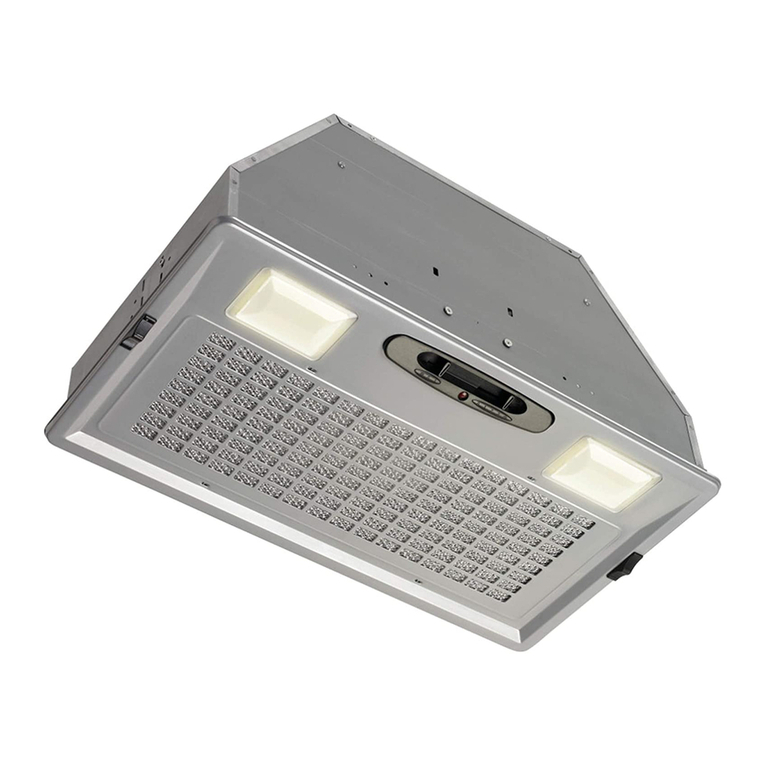
Broan
Broan PM390 SERIES instructions

DoorHan
DoorHan CV01 Installation and operation guide

Fike
Fike 55-043 installation instructions

Mitsubishi Electric
Mitsubishi Electric MELSEC iQ-R Series manual

Mitsubishi Electric
Mitsubishi Electric AJ65BT-68TD user manual

KLINGER
KLINGER KVN Series Mounting and operating instructions

